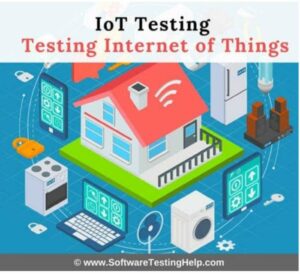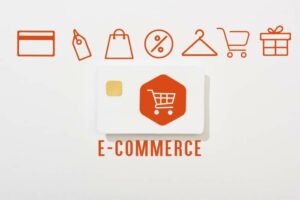Navigating the E-Commerce Era: Effective Advertising Strategies for Success
The e-commerce era has revolutionized the way businesses operate and connect with customers. With the rise of online shopping, effective advertising strategies have become vital for success in this digital landscape.
By understanding the impact of e-commerce on advertising, we can discover new ways to engage customers, increase sales, and stay ahead in this competitive digital marketplace. Let’s dive into the world of e-commerce advertising and uncover strategies to boost your brand’s success.
Understanding the E-commerce Landscape
The rapid growth of online shopping has reshaped the business landscape, making it crucial for marketers to grasp the dynamics of the e-commerce industry. Today, consumers are increasingly turning to the convenience of online platforms to make their purchases. This shift has created a unique and highly competitive marketplace, where effective advertising plays a pivotal role in capturing customer attention and driving sales.
To navigate this landscape successfully, businesses must recognize the significance of tailored advertising strategies that align with the specific demands and preferences of online shoppers. By understanding the intricacies of the e-commerce landscape, marketers can position their brands strategically and leverage the power of digital advertising to achieve sustainable growth and success.
Key Strategies for Advertising in the E-Commerce Era
Developing a Comprehensive Marketing Plan
A well-thought-out marketing plan is like the roadmap that guides your journey to success. Begin by identifying your target audience and understanding their demographics, preferences, and behaviors. Set clear objectives and goals that align with your business vision. Next, allocate a suitable budget to ensure your advertising efforts are adequately funded.
Developing a comprehensive marketing plan lays the foundation for effective decision-making and strategic execution. It’s a powerful tool that keeps you focused, organized, and on track as you navigate the dynamic world of e-commerce advertising.
Creating a Compelling Brand Identity
In the crowded e-commerce landscape, it’s crucial to stand out from the competition and capture the hearts of your target audience. This is where a compelling brand identity comes into play. Craft a unique value proposition that sets you apart from others. For example, if you’re selling handmade jewelry, emphasize its meticulous craftsmanship and your use of ethically sourced materials.
Establish a consistent brand voice and visuals that resonate with your market. Whether it’s a witty and playful tone or a sophisticated and elegant aesthetic, make sure it aligns with your brand values and your customers’ preferences.
Building trust and credibility is also vital, so highlight customer testimonials, awards, or certifications to reinforce your brand’s quality and reliability. By creating a compelling brand identity, you forge a strong connection with your audience, increasing brand loyalty and driving sales.
Optimizing Website and User Experience
A smooth online journey can make all the difference in converting visitors into loyal customers. Remember, your website is your virtual storefront, and providing a seamless user experience is paramount. It encourages visitors to stay longer, explore products or services, and potentially make a purchase.
Businesses can optimize their websites by making product categories and search functionality more accessible. Implement a user-friendly checkout process that minimizes friction and reduces cart abandonment. Simply put, enhance the website design and navigation to make it intuitive and visually appealing.
With a growing number of users accessing websites from mobile devices, businesses should make it a priority to make their websites mobile-friendly. Ensure that it is responsive and displays properly on smartphones and tablets.
An optimized website also allows for better tracking and analysis of user behavior. By integrating analytics tools, businesses can gather valuable data on visitor demographics, traffic sources, and browsing patterns. This information can inform advertising strategies, allowing businesses to target their audience more effectively and tailor their messaging based on user preferences.
Leveraging Social Media Platforms
Social media platforms have become powerful tools for e-commerce advertising, allowing businesses to connect with their market on a personal level. Identify the relevant social media channels where your audience spends most of their time. Whether it’s Instagram, Facebook, or TikTok, tailor your content to each platform’s unique features and user preferences.
Create engaging and shareable content, such as eye-catching visuals, informative videos, or captivating captions. Consider leveraging influencer marketing and user-generated content to expand your reach and build trust with your audience. By harnessing the potential of social media, you can create a community around your brand, increase brand awareness, and drive traffic to your e-commerce store.
Implementing Search Engine Optimization (SEO) Strategies
Appearing at the top of search engine results is crucial for driving organic traffic to your website. Implementing effective search engine optimization (SEO) strategies is key to achieving this. A thorough keyword search is crucial to identify which terms and phrases are regularly used by your potential clients to search for products and services.
You can also optimize your website content, including product descriptions, blog posts, and landing pages, with relevant keywords and meta tags. Creating high-quality and relevant content is essential, as search engines prioritize valuable and informative content for users. Building authoritative backlinks from reputable websites further enhances your website’s visibility and credibility.
Exploring the Benefits of Pay-Per-Click (PPC) Advertising
With PPC, you only pay when a user clicks on your ad, making it a cost-effective advertising method. Platforms like Google Ads and Bing Ads allow you to display your ads prominently in search results and across various websites.
By strategically selecting keywords and creating compelling ad copy, you can reach potential customers at the right moment when they are actively searching for products or services similar to what you offer. Monitoring and optimizing your PPC campaigns allow you to refine your targeting and maximize your return on investment (ROI).
To unlock the full potential of PPC advertising, consider collaborating with a Google Ads agency. These agencies specialize in managing and optimizing Google Ads campaigns, leveraging their expertise to maximize your results. They stay up-to-date with the latest trends and strategies, ensuring that your ads are targeting the right audience and appearing in the most effective placements.
Tracking and Analyzing Campaign Performance

Photo by Our-Team on Freepik
Tracking and analyzing campaign performance is essential to ensure the success of your advertising efforts in the e-commerce era. Implementing robust analytics tools enables you to gain valuable insights into the effectiveness of your strategies. Set up tracking mechanisms to monitor key performance indicators (KPIs) such as website traffic, conversion rates, and customer engagement.
Analyze the data to identify trends, patterns, and areas for improvement. For instance, you may discover that certain advertising channels or campaigns are driving higher conversion rates, so adjust your budget accordingly. Make data-driven adjustments to optimize your campaigns and allocate resources where they generate the highest return on investment.
Takeaway
In every kind of business venture, success lies in the ability to adapt and experiment. As the landscape of e-commerce evolves, it’s crucial for businesses to continuously refine their strategies, embracing new opportunities to connect with their target audience.
The digital realm offers an array of platforms and tools—from social media to SEO and PPC advertising— allowing marketers to explore different avenues and find what works best for their brand. By staying nimble and open to experimentation, businesses can stay ahead and capitalize on the ever-expanding possibilities of e-commerce advertising.





